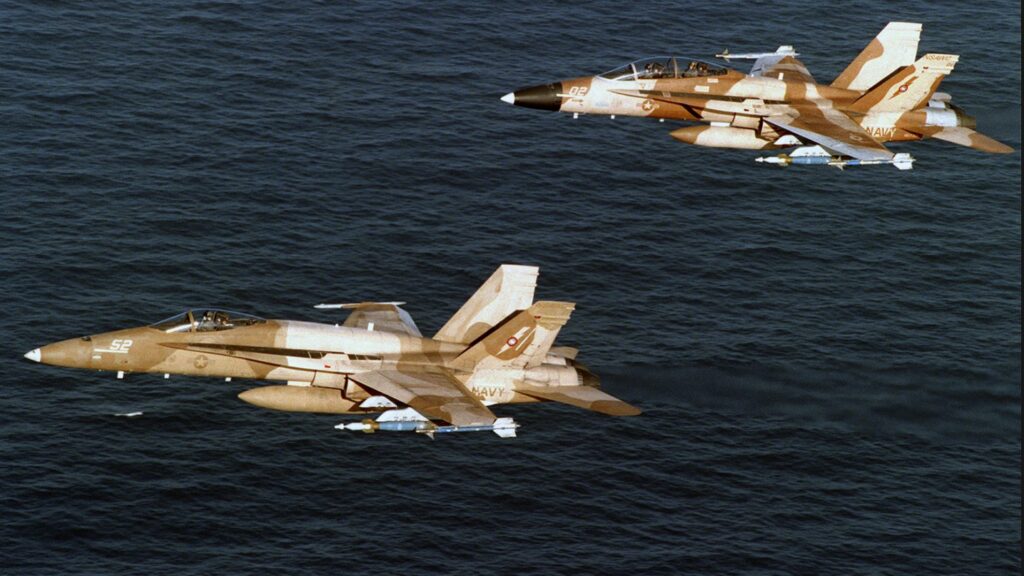DEBRIEF
Everything was and is important at TOPGUN. How you prepared for a flight, how you delivered the brief, what you did airborne, and how you uncovered the root causes, lessons learned, and best practices in the Debrief. Everything is critically important and scrutinized. However, it was the debrief and the debrief process that was paramount (second only to safety of course.)
(Authors note- The Instructor Pilots even counted how many times you said “ummmmm” and erased the white board side to side.)
It’s not like TOPGUN was the first time I had ever led or had been part of debrief. As fighter pilots we debrief all time, after every mission, regardless of the complexity or simplicity of the flight. It was just something you do. But you could always tell when a “Patch Wearer” was leading the debrief. It was just different.
Teaching And Learning Opportunity
My TOPGUN instructors were awesome. Their lectures were perfect, their guidance while flying the simulator provided clarity, and the way they managed to teach while airborne in the middle of a fight was inspiring, but it was their debriefs that set them apart. The debriefs they led were smooth and flowed seamlessly from one phase of flight to the next. The debrief followed a logical order without starts, stops, and turns. The most obscure Root Causes were uncovered and best practices were developed. And in the end, everyone left the room with their dignity intact, no matter how bad they were. TOPGUN debriefs were miraculous and unbelievably valuable.
I learned a ton in the lectures, simulators, briefs, and flights, but nothing could replace the debrief. At TOPGUN and throughout all of Naval Aviation, the debrief is a Teaching and Learning Opportunity. It is never punitive. Allow me to say that again; A debrief is and should never be punitive. Debriefing is a Teaching and Learning opportunity.
All of us can and will make mistakes. However, what we need to determine is, “was the mistake the result of a synapse lapse or a larger organizational process or behavior that needs to change.” TOPGUN debriefs got to the root causes of those issues. They also focused on the positives.

Goods And Others
We all make mistakes and we all do things right. What was refreshing about a TOPGUN led debrief is the goods were highlighted as well as the others. In fact, the very language they used changed the dynamics of the debriefs.
Wins or doing things correctly were “goods.” Losses or mistakes were “others.” Thus, we debriefed “goods and others.” Why? Because you can learn from both. Calling something a “mistake” already sets a negative connotation on the experience and the debrief. By using “goods and others,” the TOPGUN instructors made space for mistakes and failures without crushing a person’s self-esteem and confidence. TOPGUN debriefs were truly an art form.
D.E.B.R.I.E.F.
So, how can you master the “Art of the Debrief?” How can you incorporate a Debrief process and Debrief culture into your team and organization? The application takes guidance, practice, and time. However, all you need to know is how to spell DEBRIEF* to get started.
D- Decide. Make the commitment. Put in on the calendar. Don’t wait for something to go wrong. Hold debriefs at logical points in your operating cycle. Don’t wait for a “Post Mortem.”
E- Environment. It has to be safe, honest, and open. On every flight the TOPGUN IP started with their mistakes first and asked for feedback to level the playing field. Leaders, you must do the same.
B- Brief Results. If you have properly developed goals (I like to use the SMART format,) then this is a YES or No question. Did we achieve X, yes or no? Then quickly brief WHAT happened.
R- Root Cause. Now you get into the meat of the debrief. Here you must ask WHY something happened at least three to five times. Any less and you are simply doing a review.
I- Identify Best Practices. What were our goods and others and what can we do differently to either repeat the goods or negate the others?
E- Execute Best Practices. There is nothing worse than coming up with great ideas after an experience and then leaving those ideas in a room. Execute the Best Practices! Share them throughout the organization.
F- Follow-up. As a leader, follow-up to ensure the changes are being implemented and follow-up with the health of you team. Sometimes debriefs can be uncomfortable. Make sure you thank your team for their time and send them out the door with their heads held high.

Win All The Time
I’ve described how important and how debriefs are led at TOPGUN. However, can this work in the “civilian world?” Absolutely!!! For 18 years I have taught organizations large and small the “Art of the Debrief.” Those organizations and teams that made debriefing a part of their operating cycle……crush it! They have better communication within their teams, they are closer, they are mutually supportive, their customers are happier, and they have less turnover. They win all the time and they have fun doing it.
TOPGUN was an amazing school and taught me how to win in the air. But the ancillary lessons, like how to debrief and how to apply that outside of a flight, were the most valuable lessons I learned. Debriefing is a game changer. It takes the right leader creating the right culture to master the “Art of the Debrief.” However, when you do, you’ll smoke the competition and begin executing at the level of a TOPGUN fighter pilot.
(*DEBRIEF with the Checklist steps, Copyrighted July 16, 2020.)
